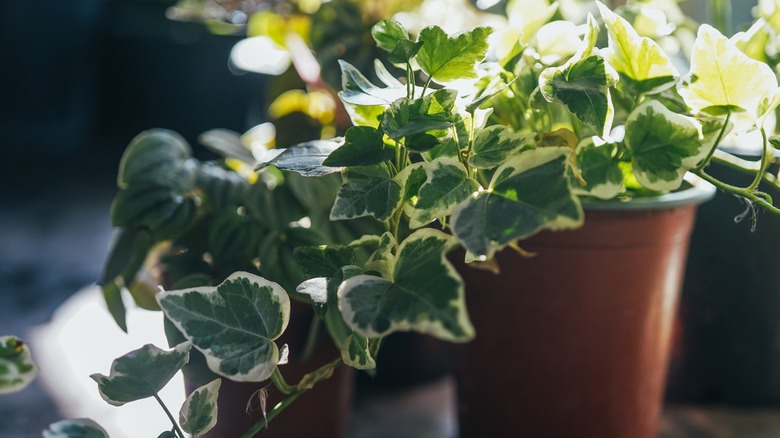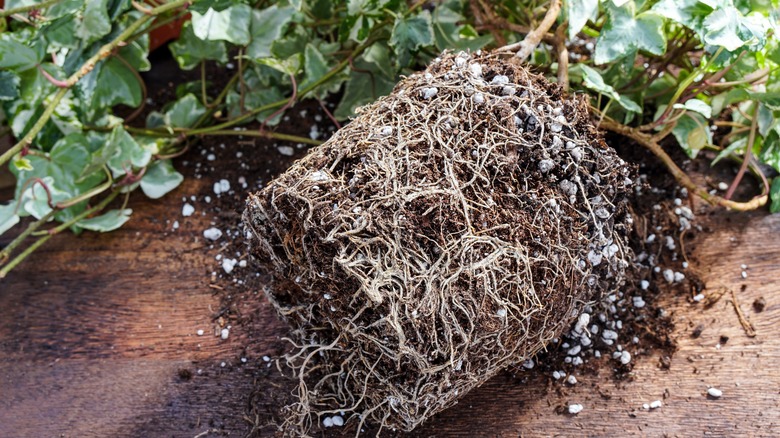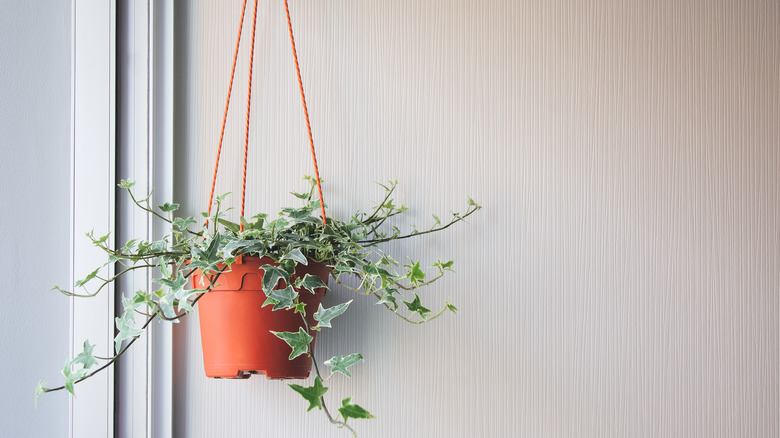The Watering Mistake Everyone Makes With Their Indoor English Ivy
It's no secret that plants need plenty of water to grow. However, there can be too much of a good thing! English ivy generally needs a lot of water but you can still kill the plant if you overdo it. Overwatering an indoor English ivy plant isn't caused by giving it too much water but by watering it too often.
To avoid killing your indoor English ivy, pay attention to its needs and recognize when you've given it too much water. Unfortunately, it can be tricky to determine whether you're overwatering the plant because the signs of overwatering are similar to the signs of underwatering. Both problems can lead to inhibited growth and yellowing leaves. However, the leaves of an overwatered English ivy plant will be soft and limp while an underwatered plant will have leaves that are dry and brittle instead.
To further determine that overwatering is the issue, also look for other common signs of overwatering. This includes edema, which appears as water-soaked spots or small blisters underneath the plant's leaves. Another major sign that you're overwatering your English ivy is if the top one-third of the soil is wet. You should ensure that this top layer of soil is dry when you water the plant.
Undoing the damage of overwatered English ivy
If root rot hasn't caused significant problems with your English ivy yet, you can potentially save it and undo the damage that overwatering has caused. Because the soil will be overly wet, you'll need to dry it or drain it to ensure that your plant can get back on track. To drain water from your potted English ivy, you can place the plant on its side in the sink for 24 hours or more.
Ensure that you're growing your English ivy in a pot that has drainage holes and that the water is escaping as it should be. Verify that the holes aren't clogged and clean them if needed so that excess water can drain out. If your English ivy is currently in a pot without drainage holes, you may want to add drainage holes yourself.
If your English ivy plant has extensive damage or if the soil seems to be extra wet, then you may want to repot the plant. You'll need to remove the plant from the pot and get rid of as much muddy soil as you can. Then, place the English ivy in a new pot that's filled with appropriate soil for the plant.
How to help your English ivy thrive indoors
By watering your English ivy the correct amount, you'll have already won half the battle towards helping your plant thrive. However, there are other things that you can do to keep your indoor English ivy healthy as well. Like other plants, there are specific conditions that English ivy tends to prefer, so you'll want to try your best to maintain them if you want your plant to stay healthy.
Remember that English ivy tends to like medium light but also grows well in brighter conditions. The plant should be kept in temperatures that are on the lower side between 50 to 70°F. It may struggle in hotter conditions.
Also, remember that although you shouldn't be overwatering your English ivy, you also don't want to underwater it. Your English ivy should also be placed where it will be relatively humid. They prefer to be where the air is moist. You can raise the humidity around your indoor English ivy by setting it in a tray filled with perlite or wet pebbles.


